 Technology
Technology  Technology
Technology  Humans
Humans 10 Everyday Human Behaviors That Are Actually Survival Instincts
 Animals
Animals 10 Animals That Humiliated and Harmed Historical Leaders
 History
History 10 Most Influential Protests in Modern History
 Creepy
Creepy 10 More Representations of Death from Myth, Legend, and Folktale
 Technology
Technology 10 Scientific Breakthroughs of 2025 That’ll Change Everything
 Our World
Our World 10 Ways Icelandic Culture Makes Other Countries Look Boring
 Misconceptions
Misconceptions 10 Common Misconceptions About the Victorian Era
 Mysteries
Mysteries 10 Strange Unexplained Mysteries of 2025
 Miscellaneous
Miscellaneous 10 of History’s Most Bell-Ringing Finishing Moves
 Technology
Technology Top 10 Everyday Tech Buzzwords That Hide a Darker Past
 Humans
Humans 10 Everyday Human Behaviors That Are Actually Survival Instincts
 Animals
Animals 10 Animals That Humiliated and Harmed Historical Leaders
Who's Behind Listverse?

Jamie Frater
Head Editor
Jamie founded Listverse due to an insatiable desire to share fascinating, obscure, and bizarre facts. He has been a guest speaker on numerous national radio and television stations and is a five time published author.
More About Us History
History 10 Most Influential Protests in Modern History
 Creepy
Creepy 10 More Representations of Death from Myth, Legend, and Folktale
 Technology
Technology 10 Scientific Breakthroughs of 2025 That’ll Change Everything
 Our World
Our World 10 Ways Icelandic Culture Makes Other Countries Look Boring
 Misconceptions
Misconceptions 10 Common Misconceptions About the Victorian Era
 Mysteries
Mysteries 10 Strange Unexplained Mysteries of 2025
 Miscellaneous
Miscellaneous 10 of History’s Most Bell-Ringing Finishing Moves
10 Awful Rampage Killings That Happened Outside The US
Even before Columbine in 1999, the United States was known for cases of random people “going postal.” This expression, which was born during a rash of rampage murders carried out by US postal workers,[1] denotes when someone goes on a concentrated killing spree, usually using a firearm as the main weapon. Those who went postal in the 1980s were overshadowed in the 1990s by school shooters, and these days, school shooters, mall shooters, movie theater shooters, and terrorists all vie for the panicked world’s attention.
While rampage killers are often seen as an exclusively American phenomenon, this is far from true. Indeed, Europe, Asia, Africa, Oceania, and Latin America have all experienced horrific rampage attacks since at least the 19th century. Some of those tragic events will be discussed in the following list.
10 The Azerbaijan State Oil Academy Shooting
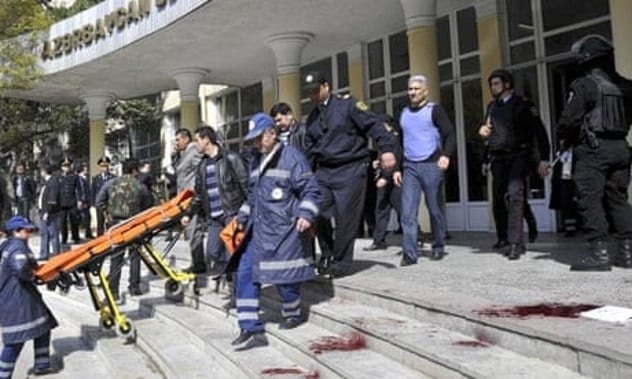
Azerbaijan is not a country that regularly makes international news. When it does, it is usually in conjunction with the long-simmering conflict over the disputed Nagorno-Karabakh region, which is claimed by both Azerbaijan and Armenia. However, Azerbaijan made the news in 2009 for a different reason—a school shooting.
On April 30, 2009, a man opened fire at the Azerbaijan State Oil Academy in the capital city of Baku, killing 12 and wounding 13 more. Shortly before 9:00 AM, the gunman, 28-year-old Farda Gadirov, used a Soviet-made Makarov pistol to shoot his way from the first floor to the sixth floor.[2] The first to die were a security guard and a cleaner. Next, Gadirov targeted students, including two foreign pupils from Syria and Sudan.
Azeri authorities would later characterize Gadirov as a “lone wolf” who had talked about carrying out a mass attack for some time. “I am coming to Baku, I will shoot everyone I meet regardless of their age. I will not give up to the police. I will experience the pleasure of killing,” the gunman wrote in a text message prior to the massacre. True to his word, Gadirov killed himself as special forces soldiers moved in to arrest him.
Despite the killer’s confession and his corpse inside the college, some in the Azeri press doubted that a common civilian could be so deadly with just a pistol. In the aftermath of the killings, an ethnically Armenian resident of Marneuli, Georgia, was accused of organizing the massacre as a “terrorist act.” Mardun Gumashyan and three others were subsequently arrested, a move which Armenia denounced as politically motivated.
9 Dunblane Massacre
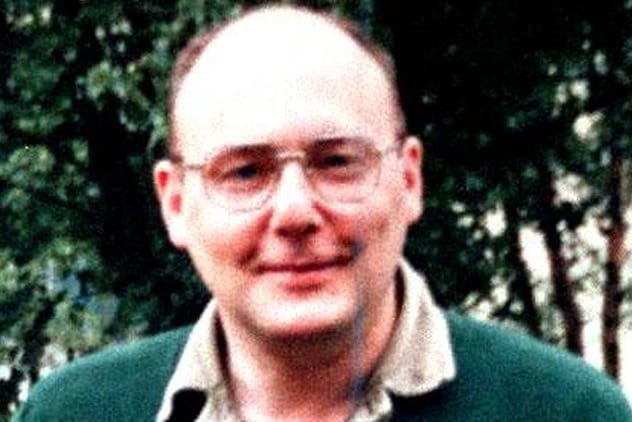
Arguably the worst mass shooting in Great Britain’s history occurred on March 13, 1996. On that dreadful day, the Scottish town of Dunblane was the target of one madman’s wrath. Specifically, gunman Thomas Hamilton arrived with four handguns and 743 rounds of ammunition and targeted children at a local primary school.
The attack began at around 9:30 AM. Hamilton entered the parking lot of the Dunblane Primary School and then cut the nearby telephone wires. Next, Hamilton shot teacher Gwen Mayor, wounded teachers Eileen Harrild and Mary Blake, and then began shooting his way through the school’s gym and library. The entire shooting took less than five minutes and ended when Hamilton killed himself.[3] The senseless crime claimed 17 lives, not counting the shooter himself.
No motivation for the crime has ever been revealed. However, there had been warning signs, especially regarding Hamilton’s infatuation with young boys. Prior to the shooting, Hamilton was mostly known as “Mr. Creepy,” a chubby loner who was the one-time assistant leader of a local Boy Scouts troop. In the 1970s, Hamilton was accused of having “suspicious [ . . . ] moral intentions towards boys.” Hamilton would blame this accusation for his failure to become a Scout leader, as well as the cancellation of his club meetings held at Dunblane High School.
Following the shooting, the British government released the Cullen Reports, which, among other things, recommended a ban on all handguns. Because of this, the Dunblane massacre is often looked to as the event that forever changed the United Kingdom’s gun laws. In the end, ownership of most types of handgun was outlawed.
8 Kunming Knife Attack
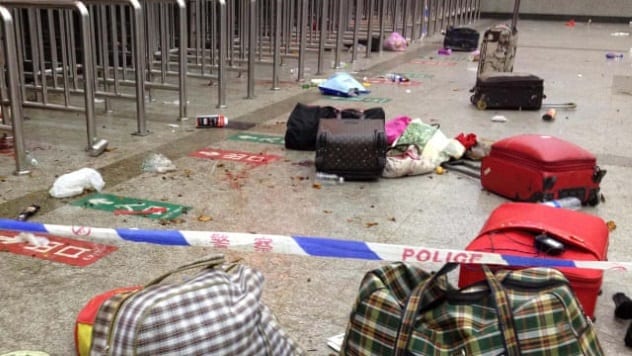
Arguably the most infamous mass knife attack in modern Chinese history occurred on March 1, 2014. At 9:20 PM, several men dressed in black descended on the Kunming Railway Station in the city of Kunming, Yunnan Province. Armed with knives and meat cleavers, the men began indiscriminately slashing, stabbing, and hacking railway passengers. When they were done, they had killed 31 people (of which seven were police officers, and two were railway security guards) and injured 143.[4] Chinese police only restored law and order by firing bullets and tear gas into the station.
A criminal investigation later determined that eight ethnic Uyghurs carried out the attack. Four of these men were shot dead at the scene by police. Four other suspects—Patigul Tohti, Iskandar Ehet, Turgun Tohtunyaz, and Hasayn Muhammad—were convicted in September 2014 of helping to plan and organize the assault.
Following this deadly attack, the central government in Beijing pledged to tackle the issue of Islamist terrorism in China with more force. This promise will likely be put to the test in the coming years, given that many ethnic Uyghurs have fought on the battlefields in Iraq and Syria alongside hardened jihadist militias. One Uyghur group even declared war on China with the help of the Turkish Army in Syria.
7 Ernst August Wagner
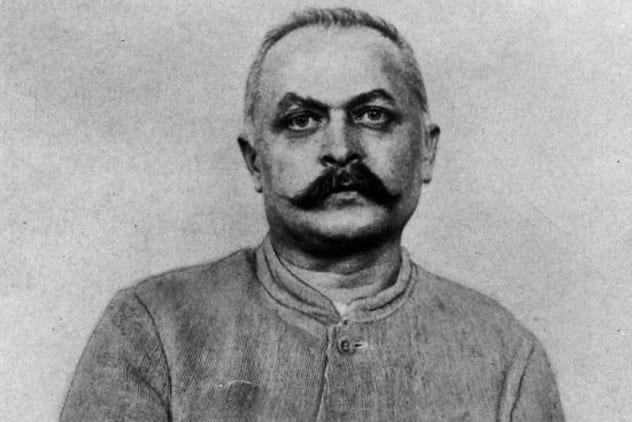
Long before the age of television and Internet connections, a German madman used pistols to kill 14 people and injure 11 more. The madman’s name was Ernst August Wagner, and he was born in 1874. Wagner came from a poor family in Eglosheim. The family’s finances got even worse once Wagner’s father died of tuberculosis while Ernst was still young. Despite being a noticeably depressed child, Ernst did manage to make something himself. By 1901, he was a schoolteacher.
Wagner’s bright future turned sour in 1902, when he was arrested for bestiality. The townsfolk of Muhlhausen an der Enz never let Wagner forget about his infamous act of drunken stupidity, and this fact seemed to enrage the already unstable man. By 1909, Wagner was married to Anna Friedricke Schient, whom he had gotten pregnant before the wedding bells chimed, and the father of several children. None of this stopped Wagner from attempting suicide at least twice.
On September 4, 1913, Wagner woke up and used a bludgeon and a knife to murder his wife and children. Wagner’s next acts were shockingly banal: He rode his bicycle to the train station, picked up a few quarts of milk, and then enjoyed beer with his sister-in-law. At 11:00 PM that night, Wagner was back in Muhlhausen, where he set fire to four homes and used two Mauser handguns to shoot everyone he saw. This shooting spree would only stop when Wagner was subdued.[5]
Wagner became something of a twisted celebrity in prewar Germany. After being found not guilty by reason of insanity, Wagner used his time at a lunatic asylum in Winnenthal to live out his lifelong dream of being a playwright.
6 Nanping School Massacre
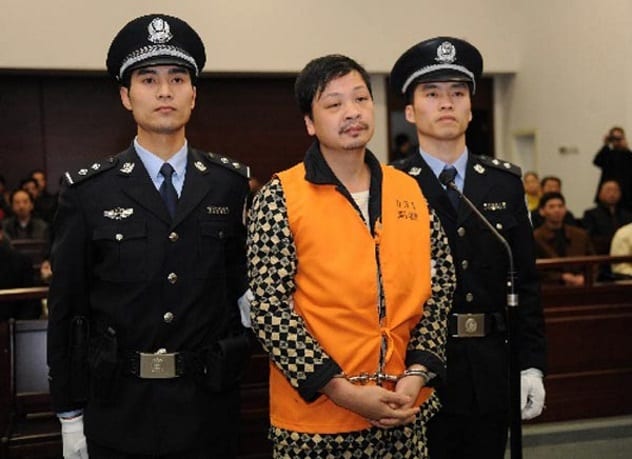
Eight schoolchildren at the Experimental School in Nanping City, Fujian Province, died because of one deranged man. The attack began at 7:20 AM on March 23, 2010. Those who were attacked were assaulted near the school’s doors, for classes had yet to begin that morning. Of the eight stabbed to death, six died at the scene, and two died later at a nearby hospital. Four boys and four girls were killed in the attack, with most being under the age of ten years old.
The perpetrator was revealed to be a former community doctor named Zheng Minsheng. Between 2002 and 2009, Zheng worked as a community doctor until he resigned over unspecified personal reasons. (Some sources said he was fired.) It was widely reported in the Chinese media that Zheng had a history of mental illness. After his attack, Chinese police officials said that Zheng had made statements about his life being “meaningless.”[6] A mere 20 days after the attack, Zheng, 41, was executed via shooting.
5 The Zug Massacre

Just days after the September 11th terrorist attacks in New York City and Washington, DC, the usually peaceful nation of Switzerland was struck by a horrific mass shooting. On September 27, 2001, a man burst into the Zug Canton Parliament, shot 14 legislators to death, and injured 18 more before killing himself.
The gunman did not match the stereotypes. Unlike most mass murderers, Friedrich Leibacher was not a young man. At the time of the shooting, he was 57 years old. However, like a lot of killers, Leibacher did have a troubled past, along with a serious mental illness. Leibacher spent several years of his life unemployed and divorced. His wives had mostly come from the Dominican Republic. One had borne him a child. In 1970, Leibacher was convicted of several offenses, ranging from theft and forgery to incest.[7] For this, Leibacher served a total of 18 months in jail.
For Leibacher, his grudge against the government began when several of his post-prison business ventures failed. What finally pushed Leibacher over the edge was a legal dispute between himself and the Canton of Zug stemming from Leibacher’s 1998 arrest for threatening a bus driver. Legal woes and a personality disorder convinced Leibacher that there was a government conspiracy against him. This is why he used several handguns and a homemade bomb to carry out what he termed his “day of rage against the Zug mafia.”
4 Hungerford Massacre
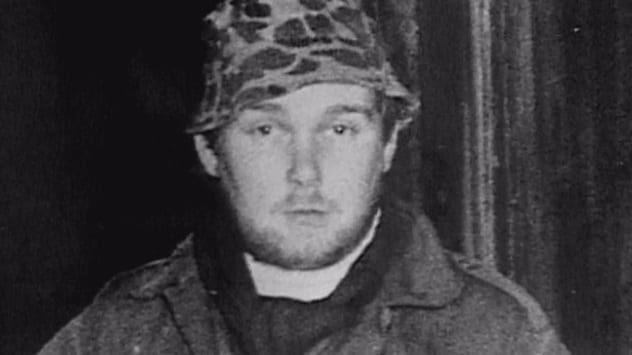
The afternoon of August 19, 1987, is one that the residents of Hungerford, England, will never forget. On that terrible day, 16 people were gunned down, and 15 were injured. Known by many as “The Tragedy,” the Hungerford massacre still remains one of the worst cases of mass violence in British history.
The man responsible for the bloodshed was 27-year-old Michael Robert Ryan, an unemployed young man who had once worked in the delicate industry of antiques. Ryan had grown up as a lonely child in South View, Hungerford. An underachiever in school and a college dropout, Ryan was only really good at being a mama’s boy. In fact, Ryan’s mother was overly indulgent and gave her son everything from a car to guns—lots and lots of guns. For the majority of his life, Ryan was seen as harmless but kooky. He was best known for telling tall tales about being married or having served as a paratrooper in the British Army.[8]
The rampage began at Savernake Forest, where Ryan used one of his guns to shoot 35-year-old mother Susan Godfrey 13 times in the back. This incident, which occurred at around 12:30 PM, came to the attention of the authorities when Godfrey’s two children, who had seen Ryan take their mother into the bushes, told a local passerby what had happened.
Ryan next went back to his home. At 12:45 PM, the gunman shot at his own car when it did not start. Ryan also set his own house on fire. Inside, police would later find the corpse of Ryan’s mother. From then until 6:20 PM, Ryan shot at anyone he saw out walking in Hungerford or even tending to their own garden. His oldest victim was an 84-year-old man, while his youngest victim was 14-year-old Lisa Mildenhall.
The ordeal came to an end when Ryan barricaded himself inside of the John O’Gaunt Community Technical College and committed suicide. Prior to pulling the trigger, Ryan reportedly said to police negotiators: “Hungerford must be a bit of a mess. I wish I’d stayed in bed.”
3 Kerch Polytechnic College Massacre
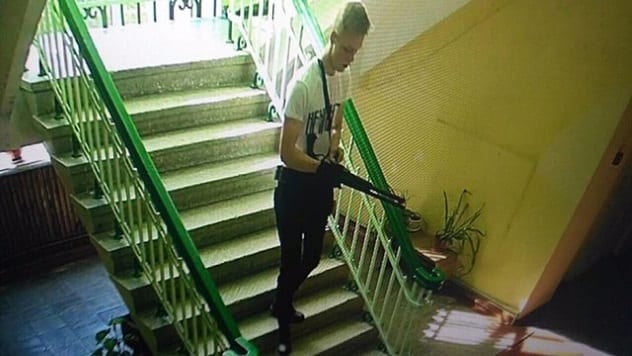
Crimea is often considered the great jewel of Europe. A charming and ancient peninsula with a history stretching back to pre-democratic Greece, Crimea is the place where Russians and Ukrainians (both of whom lay claim to the land) go on holiday.
Crimea’s reputation blackened in October 2018. On October 17, 2018, 18-year-old college student Vladislav Roslyakov entered the Kerch Polytechnic College with a mini-arsenal. The murderer’s weapons included a legally purchased Hatsan Escort Aimguard shotgun and homemade bombs, including nail and pipe bombs. After entering school grounds at 11:45 AM, Roslyakov opened fire on classmates and teachers. These shots, along with the detonation of his homemade nail bomb, killed 20 people and injured 70 in total. The gunman ultimately took his own life.
A subsequent investigation of the gunman found that he had gotten a firearms license in September 2018 and had purchased the shotgun and 150 rounds of ammunition before carrying out the attack. A search of the gunman’s home (which he shared with his mother) also uncovered several more explosive devices.[9]
Roslyakov’s motivations remain opaque. Evidence does suggest that Roslyakov hated the school and its teachers. He also had a history of being disciplined by the school. In one instance, Roslyvakov had brought a bayonet-type knife to class, while in another, he released pepper spray into a crowded classroom. Security camera footage from the attack also reveals that Roslyvakov was inspired by the Columbine school shooting, for the outfit that he wore on that tragic day was very similar to the outfit worn by Columbine killer Eric Harris.
2 William Unek

Most rampage killers attack once. This is more often than not because their rampages end in suicides. This was not the case for William Unek, one of history’s only two-time mass murderers. Not too much is known about Unek’s background or his upbringing, but by 1954, he had a steady job as a police constable in the Belgian Congo. In that year, for some unknown reason, Unek picked up an ax and used it to butcher 21 strangers in the village of Mahagi.[10] Rather than end his own life or give himself up to his fellow police officers, Unek ran off into the wilderness and eventually into the British Tanganyika Territory.
For three years, Unek lived under an assumed name in the British colony (today’s Tanzania). Then, on February 11, 1957, Unek picked up a rifle, 50 rounds of ammunition, and an ax. Over a period of 12 hours, Unek killed ten men, eight women, and eight children by shooting them to death. A further five victims were killed with the ax, while one victim was stabbed, one female victim was strangled to death, and two women and a child were burned alive after Unek set their houses ablaze.
Unek’s orgy of blood came to an end when an African constable named Iyumbu and a police superintendent managed to fatally wound Unek with a smoke bomb that accidentally caused a fire.
1 The Shijiazhuang Bombings
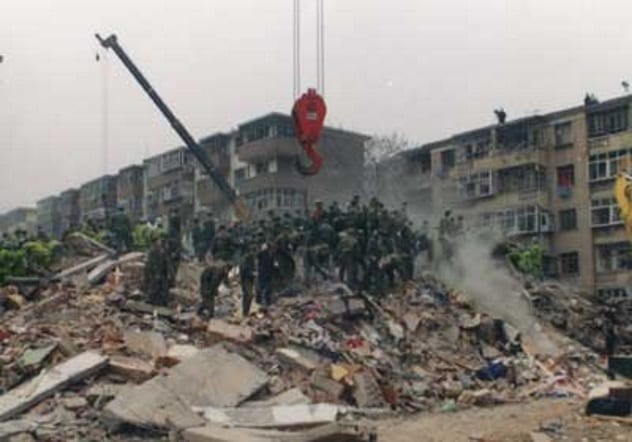
On March 16, 2001, one man, Jin Ruchao, detonated a series of bombs at approximately 4:00 AM. The Chinese government would later say that the bomber traveled to his targets via taxi. Whatever the truth, Jin, a deaf and unemployed worker, managed to carry out the largest mass murder in Chinese history. Jin used ten sacks of explosives to destroy four blocks of apartments, killing 108 people in total.
The government-run newspaper People’s Daily reported ten days after the attack that Jin, 41, carried out the massive attack because of his deep-seated hatred of his ex-wife, ex-mother-in-law, and a former lover.[11] These individuals lived in some of the targeted apartment buildings, while another had once been owned by Jin’s mother.
Jin’s troubles began in 1988, when he was sent to prison for ten years after being convicted of rape. Before that, Jin apparently liked to produce homemade dynamite. Despite such circumstantial evidence, many residents of Shijiazhuang openly questioned whether a barely literate man could carry out four bombings that went off almost simultaneously.
Jin Ruchao was executed barely three months after his horrendous crime.
Read about more terrible mass killings on 10 Small Towns Devastated By Sudden Killing Sprees and 10 Haunting Unsolved Mass Murders








